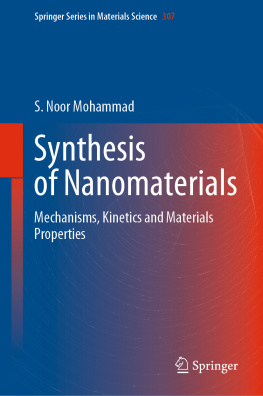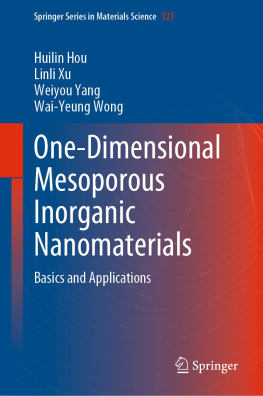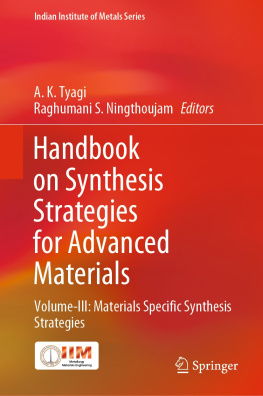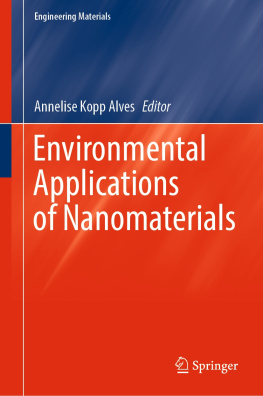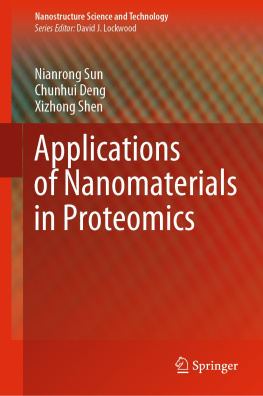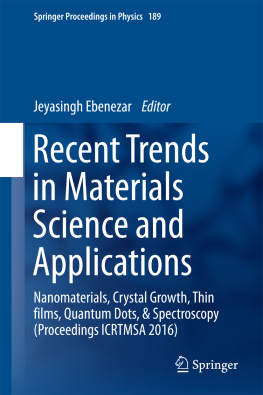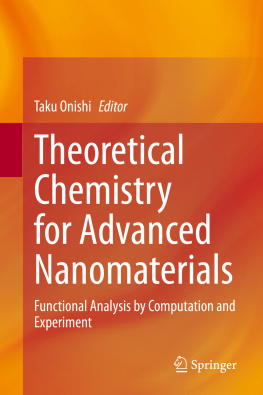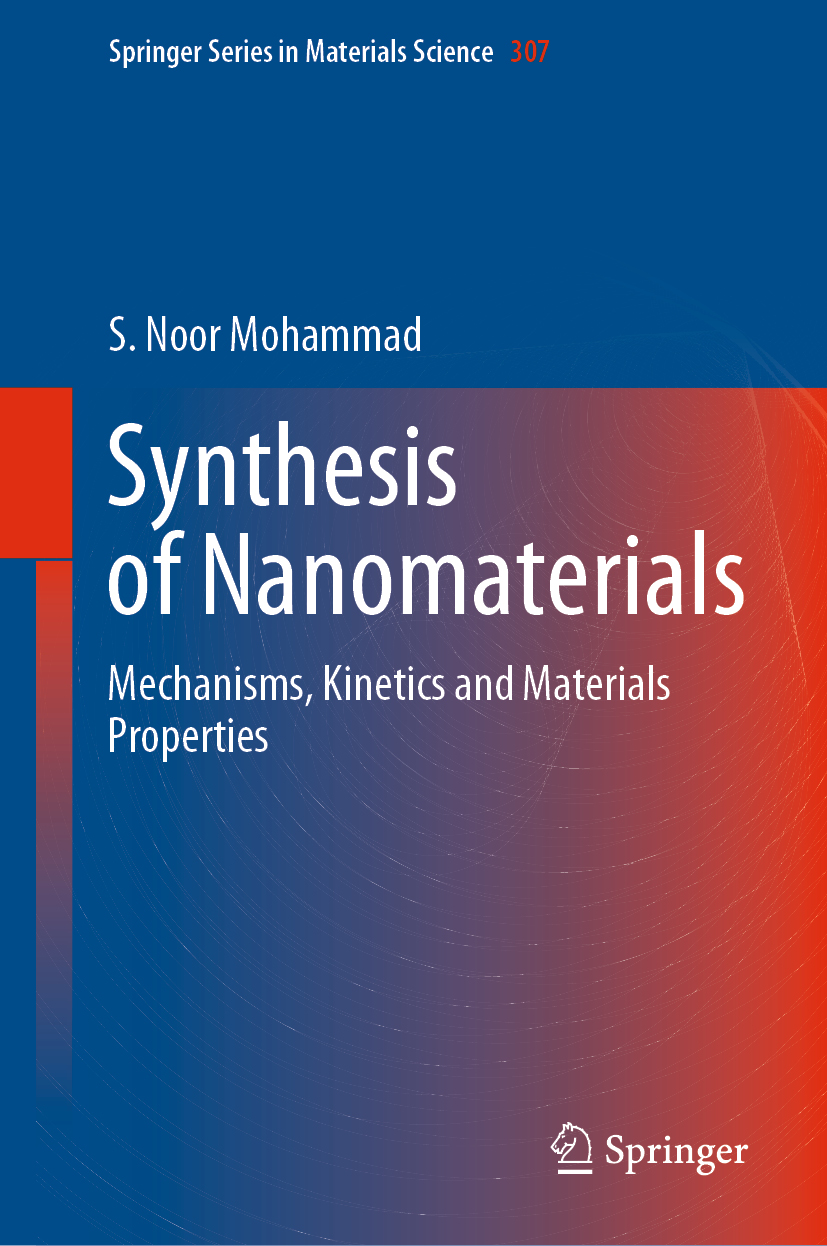Volume 307
Springer Series in Materials Science
Series Editors
Robert Hull
Center for Materials, Devices, and Integrated Systems, Rensselaer Polytechnic Institute, Troy, NY, USA
Chennupati Jagadish
Research School of Physical, Australian National University, Canberra, ACT, Australia
Yoshiyuki Kawazoe
Center for Computational Materials, Tohoku University, Sendai, Japan
Jamie Kruzic
School of Mechanical & Manufacturing Engineering, UNSW Sydney, Sydney, NSW, Australia
Richard M. Osgood
Department of Electrical Engineering, Columbia University, New York, USA
Jrgen Parisi
Universitt Oldenburg, Oldenburg, Germany
Udo W. Pohl
Institute of Solid State Physics, Technical University of Berlin, Berlin, Germany
Tae-Yeon Seong
Department of Materials Science & Engineering, Korea University, Seoul, Korea (Republic of)
Shin-ichi Uchida
Electronics and Manufacturing, National Institute of Advanced Industrial Science and Technology, Tsukuba, Ibaraki, Japan
Zhiming M. Wang
Institute of Fundamental and Frontier Sciences - Electronic, University of Electronic Science and Technology of China, Chengdu, China
The Springer Series in Materials Science covers the complete spectrum of materials research and technology, including fundamental principles, physical properties, materials theory and design. Recognizing the increasing importance of materials science in future device technologies, the book titles in this series reflect the state-of-the-art in understanding and controlling the structure and properties of all important classes of materials.
More information about this series at http://www.springer.com/series/856
S. Noor Mohammad
Synthesis of Nanomaterials
Mechanisms, Kinetics and Materials Properties
1st ed. 2020
S. Noor Mohammad
Washington, DC, USA
ISSN 0933-033X e-ISSN 2196-2812
Springer Series in Materials Science
ISBN 978-3-030-57584-7 e-ISBN 978-3-030-57585-4
https://doi.org/10.1007/978-3-030-57585-4
The Editor(s) (if applicable) and The Author(s), under exclusive license to Springer Nature Switzerland AG 2020
This work is subject to copyright. All rights are solely and exclusively licensed by the Publisher, whether the whole or part of the material is concerned, specifically the rights of translation, reprinting, reuse of illustrations, recitation, broadcasting, reproduction on microfilms or in any other physical way, and transmission or information storage and retrieval, electronic adaptation, computer software, or by similar or dissimilar methodology now known or hereafter developed.
The use of general descriptive names, registered names, trademarks, service marks, etc. in this publication does not imply, even in the absence of a specific statement, that such names are exempt from the relevant protective laws and regulations and therefore free for general use.
The publisher, the authors and the editors are safe to assume that the advice and information in this book are believed to be true and accurate at the date of publication. Neither the publisher nor the authors or the editors give a warranty, expressed or implied, with respect to the material contained herein or for any errors or omissions that may have been made. The publisher remains neutral with regard to jurisdictional claims in published maps and institutional affiliations.
This Springer imprint is published by the registered company Springer Nature Switzerland AG
The registered company address is: Gewerbestrasse 11, 6330 Cham, Switzerland
Preface
This book Synthesis of Nanomaterials: Mechanisms, Kinetics and Materials Properties is aimed at the senior undergraduate and graduate students in the disciplines of science and engineering, particularly physics, chemistry, materials science and engineering, chemical engineering, electrical engineering, mechanical engineering, bioengineering, and biology. Researchers in the areas of nanomaterials and nanosciences from industry, academia, and government agencies may particularly find the book useful. However a basic level of competency in physics, chemistry and mathematics would be required for this. The first few of the eighteen chapters of the book provide background of the basic nanomaterials synthesis science. It should greatly serve as a ready reference for the understanding of the fundamental chemistry and physics of the latest advances in nanomaterials synthesis. It should provide a broad perspective and scientific depth for the readers who intend to comprehend the rapidly developing new sciences in the interdisciplinary area of nanomaterials synthesis.
The book contains a great deal of information departed from the ones based on existing conventional knowledge of nanomaterials science. I believe that the book may hence evoke controversy. It may be seen as challenging the consensus built over the years. System of any kind and in any context tries to preserve the status quo; it tries to disregard the new ones by all means possible. Having spent 50+ years in the field of chemistry and physics of materials, and having 250 research articles written and published in major journals in this area, this author feels obliged to share his knowledge, analyses, and conclusions, some of which different from the norm. His goal is to raise the level of awareness among the scientists and engineers and to initiate the discussions that, in turn, may entail major changes, as well as revisions of the existing, conventional knowledge in favor of the new and corrected ones. If his ideas and knowledge different from the conventional ones are found correct, and this book is considered pioneeringdistinctly different from the ones based largely on existing knowledgethe beneficiaries will be all of usourselves, our scientists, our researchers, our children, our grand children, and our society, as a whole.
The author owes a debt of gratitude to numerous scientists who worked with him, corrected him whenever necessary, provided him guidance, and shared their knowledge with him. They include Dr. Sudhir Kumar De, Dr. Zhi-Fang Fan, Dr. Haseeb F. Rashid, Prof. Charles E. Rogers, Late Prof. Osman. K. Mawardi, Prof. M. A. Sobhan, Dr. Arif Khan, and Dr. Saeed Ganji. Born and brought up in a remote village in India, the author has an extremely humble background. The most favorite dreams of his parents about him turned out to be wrong because of two menMr. Nagendra Nath Das at Golgram High School and Prof. H. N. Bose at the Indian Institute of Technology, Kharagpur, both in India. They were his teachers, mentors, guides, and supervisors. Almost everything that he has got in life has been made possible because of these two great teachers. Dr. Arif Khan and his wife Roksana Parvin have done everything during the past 20 years to keep him alive and active in research. They have been truly guides in his pursuit for new knowledge and new science. David Silverio Hernandez Pineda has always provided technical assistance needed for this research. And, lastly his daughter Lina has been a constant source of encouragement for him to continue his work. The publishing of the book would not be easy without the help and cooperation of Dr. Zachary Evenson, the Physics Editor at the Springer Nature Publishing Company. He is grateful to all of them.

